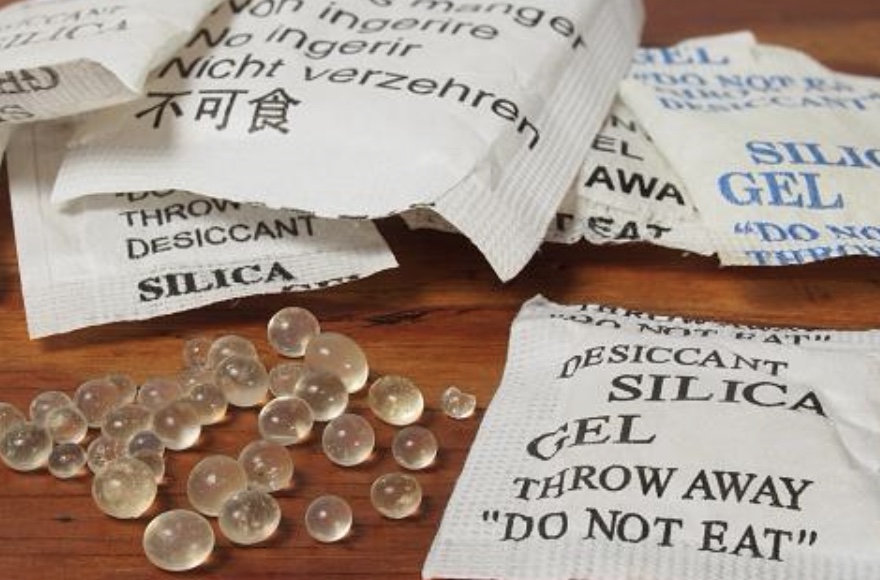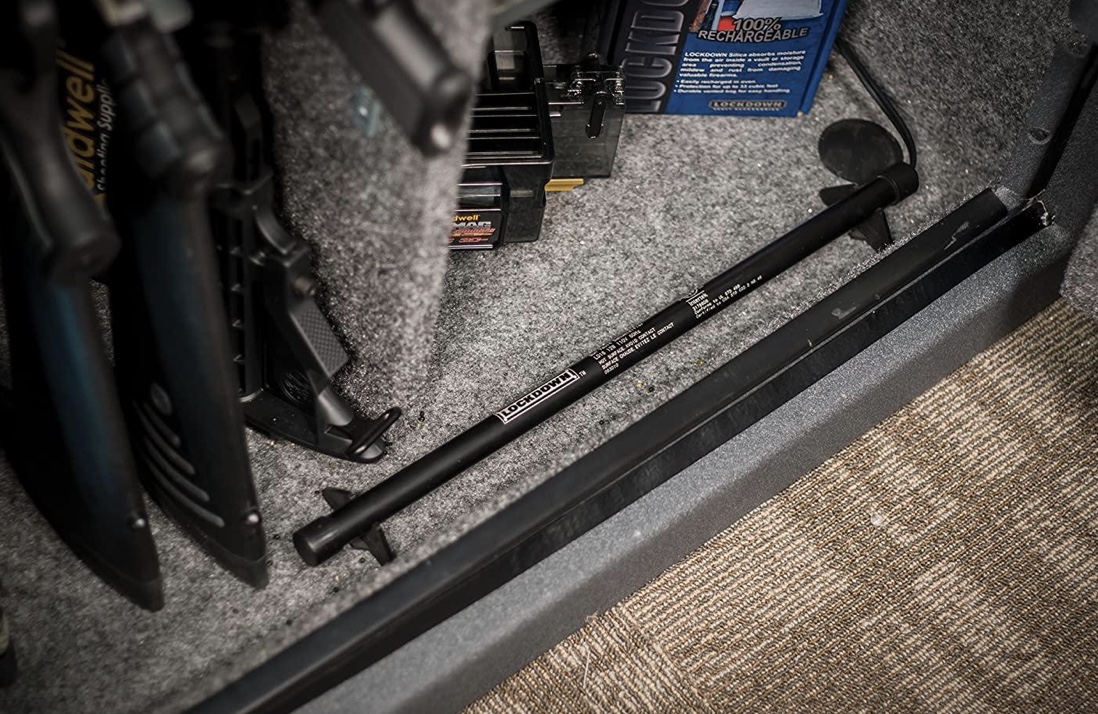Moisture may be great for your skin, but it doesn’t do any favors to high-precision mechanical parts, such as the ones in guns. That’s why many gun owners use some form of dehumidifier in their safes. What different options are there? How do they work? Let’s get into everything you need to know about gun safe dehumidification.
How Does Moisture Affect Guns?
It should be obvious that, whether you’re a typical homeowner or Alec Baldwin (https://en.wikipedia.org/wiki/Rust_shooting_incident), rust and guns just don’t mix. Guns are full of small metal parts, with intricate mechanical relationships and tight tolerances.
“Tight tolerances” means that there’s sometimes barely a fraction of an inch between two parts that fit with each other. For example, the firing pin might fit into a hole that has no more than a hair’s width of space on any side. Some tolerances are so tight, they’re measured in thousandths of an inch!
Rust takes up more space than pure metal, so parts expand slightly as they rust. In places with extremely tight tolerances, rust could keep parts from moving. If both sides of a part rust, the rust could stick together, practically welding the parts! That’s obviously terrible for a gun.
If your ammunition is stored in a gun safe along with your gun, it could be even worse. Wet ammunition may simply not fire, or it may jam in unique and dangerous ways.
People who are inexperienced with guns often check the chamber as soon as they notice a failure to fire, or worse, look down the barrel. But sometimes the firing process is only delayed, and if the round goes off while the user is inspecting the firearm, they could be injured or killed. Wet ammunition can cause this tragic event.
Unreliable and poorly functioning firearms are some of the most dangerous tools to use. Moisture causes all of these problems.
Using a Desiccant
One option to prevent humidity and rust damage is to use a dry desiccant. Think of the silica gel packs you find in a lot of packaging, or the terracotta stones some people put in brown sugar. Based on this definition, a desiccant is anything that dries something out, but there’s more to it than that.
A desiccant is any chemical compound that can absorb a lot of moisture. It’s something so dry that everything around it becomes drier just by its presence. It’s like the Sahara Desert wrapped up in a neat little bag. How it works is kind of baffling, but it does work.
After a while, a desiccant may have absorbed all the water it can, but the fix is simple. Any dry powder similar to a silica gel can simply be loaded onto a baking tray and placed into the oven. The oven will dry all the water out and return the desiccant to its normal, extremely dry state. Theoretically, this process can be repeated limitlessly, constantly recycling your desiccant, with only a short bit of maintenance every few months or so.
What desiccant your gun safe needs depends on the volume of your safe. Some new brands can dehumidify up to 300 cubic feet. If your safe was 6 feet by 5 feet by 10 feet, that would still be enough coverage. If your guns are stored in some kind of huge room or bunker, though, that wouldn’t be enough.
In that situation, you have two options: to double up and use more than one pack of desiccant, or to use an electric dehumidifier instead. So let’s go ahead and talk electric, and see what the pros and cons are and how they compare!

Electric Dehumidifiers
Electric dehumidifier rods are much more effective than dry desiccants—and yes, to answer the question in the title, they work just fine—but they do come with a few more limitations.
Since they run on electricity, you have to be able to run electricity into your safe. This usually involves drilling a hole. Having a hole in the safe that is specifically designed to keep anything and everything out might seem like a bad idea, but it can actually work without too many problems.
The hole required to run an electrical wire through is pretty small. It’s not like thieves can steal your guns out through a hole smaller than a penny! Since the hole is so tiny, it’s also unlikely for any fire damage to reach the inside of the safe. The amount of heat that can enter through that gap is limited, although it’s still worse than having a solid exterior.
There are many sizes of gun safe heater rods, but the twelve-inch size is good for anything under 100 cubic feet, which most safes are. (For context, 100 cubic feet is the same as four and a half feet in every direction. Is your safe four and a half feet in every direction? I didn’t think so.)
Some dehumidifiers are as little as $20; some are more than $350. Think thoroughly about what kind you really need before you waste your money on something unreasonably expensive and no more helpful than a cheap one.
Not every electric dehumidifier is a rod shape, but you’ll probably want one in that shape for a gun safe. Something blocky and square will take up much more space that you could be storing guns in, but a thin rod will fit in just as smoothly as a rifle bore.
Another con of electric dehumidifiers is maintenance. Any electrical system will eventually wear out. The simple chemical mechanism of a desiccant, however, can easily be maintained. During the lifetime of your safe, though, you may only need to replace or repair an electrical rod once or twice, but desiccant needs to be refreshed every few months.
Monitoring
It’s also a good idea to have a mechanism like a hygrometer (https://www.britannica.com/science/hygrometer) to measure water content in your safe. A thermometer may be useful for monitoring temperature as well. Keeping track of the conditions your firearms are in is essential to good gun storage.
With the right tools, you can ensure that your tools are safe—and, in so doing, that you are safe too.






